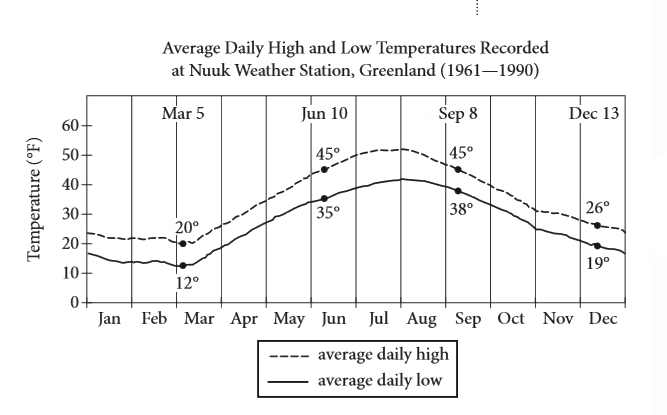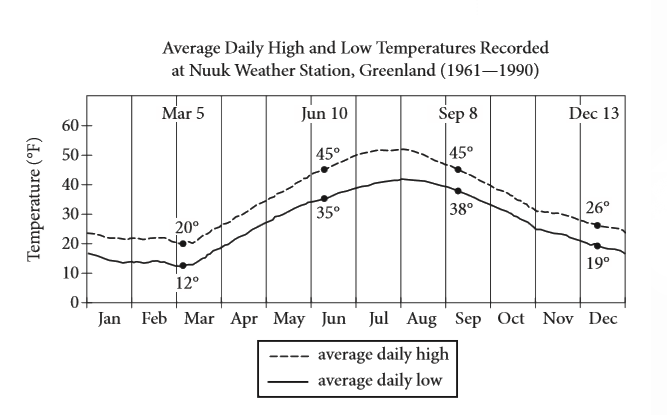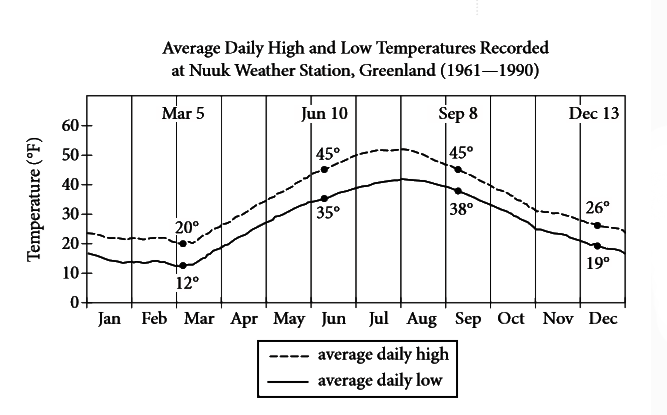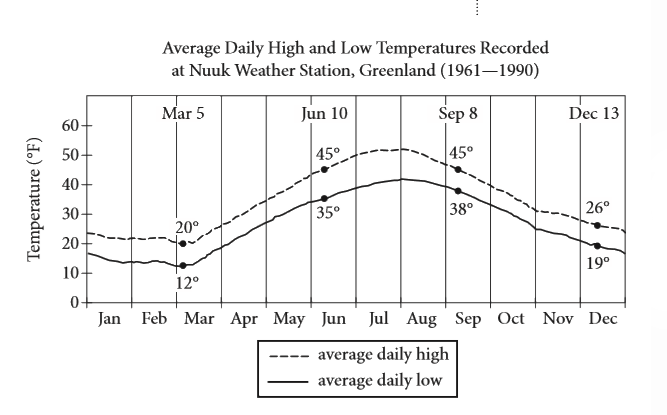A mango tree is at the bank of a river and one of the branch of tree extends over the river. A tortoise lives in the river. A mango falls just ono the tortoise. The acceleration of the mango falling from tree as it appears to the tortoise is (refractive index of water is 4/3 and the tortoise is stationary)
g
3g/4
4g/3
none of these
The correct Answer is:c.
To solve the problem, we need to determine the acceleration of a mango falling from a tree as it appears to a tortoise in the river, given the refractive index of water. Let's break this down step by step.
Step 1: Understand the scenario
We have a mango tree on the bank of a river, and a mango falls from the tree onto a tortoise in the water. The refractive index of water is given as μ=43.
Step 2: Identify the mediums
The mango is falling from air (first medium) into water (second medium). The refractive index of air is approximately 1.
Step 3: Use the refraction formula
The formula for refraction at the interface between two mediums is given by:
μ2v−μ1u=μ2−μ1R
where:
- μ1=1 (refractive index of air)
- μ2=43 (refractive index of water)
- R is the radius of curvature, which is infinite for a flat surface (water surface), so it becomes 0.
Step 4: Simplify the equation
Since R is infinite, the equation simplifies to:
43v−1u=0
This implies:
43v=u
Thus, we can express the apparent distance v in terms of the actual distance u:
v=3u4
Step 5: Differentiate to find velocity
Now, we differentiate both sides with respect to time t:
dvdt=34dudt
Here, dudt is the velocity of the mango falling (denoted as vm), and dvdt is the apparent velocity of the mango as seen by the tortoise.
Step 6: Differentiate again to find acceleration
Next, we differentiate again with respect to time:
d2vdt2=34d2udt2
Here, d2udt2 is the acceleration of the mango, which is equal to g (acceleration due to gravity).
Step 7: Substitute to find the apparent acceleration
Substituting g into the equation gives:
d2vdt2=34g
Thus, the apparent acceleration of the mango as it appears to the tortoise is:
d2vdt2=4g3
Final Answer
The acceleration of the mango falling from the tree as it appears to the tortoise is 4g3.
---
We have a mango tree on the bank of a river, and a mango falls from the tree onto a tortoise in the water. The refractive index of water is given as μ=43.
The mango is falling from air (first medium) into water (second medium). The refractive index of air is approximately 1.
The formula for refraction at the interface between two mediums is given by:
μ2v−μ1u=μ2−μ1R
where:
- μ1=1 (refractive index of air)
- μ2=43 (refractive index of water)
- R is the radius of curvature, which is infinite for a flat surface (water surface), so it becomes 0.
Since R is infinite, the equation simplifies to:
43v−1u=0
This implies:
43v=u
Thus, we can express the apparent distance v in terms of the actual distance u:
v=3u4
Now, we differentiate both sides with respect to time t:
dvdt=34dudt
Here, dudt is the velocity of the mango falling (denoted as vm), and dvdt is the apparent velocity of the mango as seen by the tortoise.
Next, we differentiate again with respect to time:
d2vdt2=34d2udt2
Here, d2udt2 is the acceleration of the mango, which is equal to g (acceleration due to gravity).
Substituting g into the equation gives:
d2vdt2=34g
Thus, the apparent acceleration of the mango as it appears to the tortoise is:
d2vdt2=4g3
The acceleration of the mango falling from the tree as it appears to the tortoise is 4g3.
Topper's Solved these Questions
- GEOMETRICAL OPTICSBOOK - CENGAGE PHYSICS ENGLISHCHAPTER - GEOMETRICAL OPTICSEXERCISE - Assertion-Reasoninig
2 Videos
- GEOMETRICAL OPTICSBOOK - CENGAGE PHYSICS ENGLISHCHAPTER - GEOMETRICAL OPTICSEXERCISE - Linked Comprehension
51 Videos
- GEOMETRICAL OPTICSBOOK - CENGAGE PHYSICS ENGLISHCHAPTER - GEOMETRICAL OPTICSEXERCISE - Subjective
26 Videos
- ELECTRON,PHONTS,PHOTOELECTRIC EFFECT & X-RAYSBOOK - CENGAGE PHYSICS ENGLISHCHAPTER - ELECTRON,PHONTS,PHOTOELECTRIC EFFECT & X-RAYSEXERCISE - dpp 3.3
15 Videos
- HEATING EFFECT OF CURRENTBOOK - CENGAGE PHYSICS ENGLISHCHAPTER - HEATING EFFECT OF CURRENTEXERCISE - Thermal Power in Resistance Connected in Circuit
27 Videos
Similar Questions
When a mango falls from a mango tree then
View SolutionThe pH of water smaple collected from a river was found to be acidic in the range of 3.5-4.5, on the banks of the river were several factories that were discharging effluents into the river. The effluents of which one of the following factories is the most cause for lowering the pH of river water ?
View Solution
Knowledge Check
A Lion’s Share of Luck
It’s the beginning of February, and as they do every year, thousands of people line H Street, the heart of Chinatown in Washington, DC. The crowd has gathered to celebrate Lunar New Year. The street is a sea of 12 red. Red––––––––– is the traditional Chinese color of luck and happiness. Buildings are 13 draped with festive, red, banners,–––––––––––––––––––––––––––––––––––– and garlands. Lampposts are strung with crimson paper lanterns, which bob in the crisp winter breeze. The eager spectators await the highlight of the New Year parade: the lion dance.
Experts agree that the lion dance originated in the Han dynasty (206 BCE–220 CE), however, there is little agreement about the dance’s original purpose. Some evidence suggests that the earliest version of the dance was an attempt to ward off an evil spirit, 14 lions are obviously very fierce––––––––––––––––––––––––––––––––. Another theory is that an emperor, upon waking from a dream about a lion, hired an artist to choreograph the dance. 15 The current function of the dance is celebration.––––––––––––––––––––––––––––––––––––––––––––––––––––
The lion dance requires the strength, grace, and coordination of two dancers, 16 both of whom––––––––––––––– are almost completely hidden by the elaborate bamboo and papier-mâché lion costume that they maneuver. One person operates the lion’s head as the other guides the torso and tail. Many of the moves in the dance, such as jumps, rolls, and kicks, are similar to 17 martial arts and acrobatics–––––––––––––––––––––––––––––. The dancers must be synchronized with the music accompanying the dance—drums, cymbals, and gongs that supply the lion’s roar—as well as with each other.
[1] While there are many regional variations of the lion dance costume, all make extensive use of symbols and colors. [2] The lion’s head is often adorned with a phoenix 18 (a mythical bird)––––––––––––––––––– or a tortoise (for longevity). [3] Green lions encourage friendliness. [4] Golden and red lions represent liveliness and bravery, respectively. [5] Their older counterparts, yellow and white lions, dance more slowly and deliberately. [6] In some variations, lions of different colors are different ages, and they move accordingly. [7] Black lions are the youngest, therefore, they dance quickly and playfully. [8] The appearance of the lions varies, but their message is consistent: Happy New Year. 19
As the parade winds its way through Chinatown, the music crescendos, and the lion dance reaches 20 it’s–––– climax with the “plucking of the greens.” Approaching a doorway in which dangles a red envelope filled with green paper money, the 21 lion’s teeth snare the envelope–––––––––––––––––––––––––––––––––. It then chews up the bills and spits out the 22money-filled envelope instead of chewing it up––––––––––––––––––––––––––––––––––––––––––––––––––. The crowd cheers for the lion dancers and for the prosperity and good fortune their dance foretells.
Which choice provides information that is most consistent in style and content with the information about the symbolism of the tortoise?ANO CHANGEB(for new beginnings)C(from Chinese mythology)D(for symbolic reasons)Dark Snow
Most of Greenland’s interior is covered by a thick layer of ice and compressed snow known as the Greenland Ice Sheet. The size of the ice sheet fluctuates seasonally: in summer, average daily high temperatures in Greenland can rise to slightly above 50 degrees Fahrenheit, partially melting the ice, in the winter, the sheet thickens as additional snow falls, and average daily low temperatures can drop to (12) as low as 20 degrees–––––––––––––––––––––.

Typically, the ice sheet begins to show evidence of thawing in late (13)summer. This follows––––––––––––––––––––––– several weeks of higher temperatures. 14 For example––––––––––––––, in the summer of 2012, virtually the entire Greenland Ice Sheet underwent thawing at or near its surface by mid-July, the earliest date on record. Most scientists looking for the causes of the Great Melt of 2012 have focused exclusively on rising temperatures. The summer of 2012 was the warmest in 170 years, records show. But Jason (15) Box, an associate––––––––––––––––––– professor of geology at Ohio State believes that another factor added to the early (16) (thaw), the “dark snow” problem.
According to Box, a leading Greenland expert, tundra fires in 2012 from as far away as North America produced great amounts of soot, some (17) of it–––––drifted over Greenland in giant plumes of smoke and then (18) fell–––– as particles onto the ice sheet. Scientists have long known that soot particles facilitate melting by darkening snow and ice, limiting (19) it’s–––– ability to reflect the Sun’s rays. As Box explains, “Soot is an extremely powerful light absorber. It settles over the ice and captures the Sun’s heat.” The result is a self-reinforcing cycle. As the ice melts, the land and water under the ice become exposed, and since land and water are darker than snow, the surface absorbs even more heat, which (20) is related to the rising temperatures–––––––––––––––––––––––––––––––––––––––.
[1] Box’s research is important because the fires of 2012 may not be a one-time phenomenon. [2] According to scientists, rising Arctic temperatures are making northern latitudes greener and thus more fire prone.[3] The pattern Box observed in 2012 may repeat (21) itself again––––––––––––, with harmful effects on the Arctic ecosystem. [4] Box is currently organizing an expedition to gather this crucial information. [5] The next step for Box and his team is to travel to Greenland to perform direct sampling of the ice in order to determine just how much the soot is contributing to the melting of the ice sheet. [6] Members of the public will be able to track his team’s progress—and even help fund the expedition—through a website Box has created. (22)ANO CHANGEBHowever,CAs such,DMoreover,Dark Snow
Most of Greenland’s interior is covered by a thick layer of ice and compressed snow known as the Greenland Ice Sheet. The size of the ice sheet fluctuates seasonally: in summer, average daily high temperatures in Greenland can rise to slightly above 50 degrees Fahrenheit, partially melting the ice, in the winter, the sheet thickens as additional snow falls, and average daily low temperatures can drop to (12) as low as 20 degrees–––––––––––––––––––––.

Typically, the ice sheet begins to show evidence of thawing in late (13)summer. This follows––––––––––––––––––––––– several weeks of higher temperatures. 14 For example––––––––––––––, in the summer of 2012, virtually the entire Greenland Ice Sheet underwent thawing at or near its surface by mid-July, the earliest date on record. Most scientists looking for the causes of the Great Melt of 2012 have focused exclusively on rising temperatures. The summer of 2012 was the warmest in 170 years, records show. But Jason (15) Box, an associate––––––––––––––––––– professor of geology at Ohio State believes that another factor added to the early (16) (thaw), the “dark snow” problem.
According to Box, a leading Greenland expert, tundra fires in 2012 from as far away as North America produced great amounts of soot, some (17) of it–––––drifted over Greenland in giant plumes of smoke and then (18) fell–––– as particles onto the ice sheet. Scientists have long known that soot particles facilitate melting by darkening snow and ice, limiting (19) it’s–––– ability to reflect the Sun’s rays. As Box explains, “Soot is an extremely powerful light absorber. It settles over the ice and captures the Sun’s heat.” The result is a self-reinforcing cycle. As the ice melts, the land and water under the ice become exposed, and since land and water are darker than snow, the surface absorbs even more heat, which (20) is related to the rising temperatures–––––––––––––––––––––––––––––––––––––––.
[1] Box’s research is important because the fires of 2012 may not be a one-time phenomenon. [2] According to scientists, rising Arctic temperatures are making northern latitudes greener and thus more fire prone.[3] The pattern Box observed in 2012 may repeat (21) itself again––––––––––––, with harmful effects on the Arctic ecosystem. [4] Box is currently organizing an expedition to gather this crucial information. [5] The next step for Box and his team is to travel to Greenland to perform direct sampling of the ice in order to determine just how much the soot is contributing to the melting of the ice sheet. [6] Members of the public will be able to track his team’s progress—and even help fund the expedition—through a website Box has created. (22)ANO CHANGEBitselfCitself, with damage andDitself possibly
A small ball is thrown from the edge of one bank of a river of width 100m to just reach the bank. The ball was thrown in the vertical plane (which is also perpendicular to the banks) at an angle 37∘ to the horizonatal. Taking the starting the point as the origin O, verection as positeve y-axis and horizonrtal line passing through the point O and perpenducular to the bank as x-axis find:
(a) Equation of trahectory of the image formed by the water surface
(water surface is at the level y=0)
(b) instantaneous velocity of the image formed due to refraction. [Use g=10m/s2,R.I. of water =4/3]
View SolutionA boy stretches a stone against the rubber tape of a catapult or gulel (a device used to detach mangoes from the tree by boys in Indian villages) through a distance of 24 cm before leaving it. The tape returns to its normal position accelerating the stone over the stretched length. The stone leaves the gulel with a speed 2.2 m/s. Assuming that the acceleration is constant while the stone was being pushed by the tape, find its magnitude.
View SolutionDark Snow
Most of Greenland’s interior is covered by a thick layer of ice and compressed snow known as the Greenland Ice Sheet. The size of the ice sheet fluctuates seasonally: in summer, average daily high temperatures in Greenland can rise to slightly above 50 degrees Fahrenheit, partially melting the ice, in the winter, the sheet thickens as additional snow falls, and average daily low temperatures can drop to (12) as low as 20 degrees–––––––––––––––––––––.

Typically, the ice sheet begins to show evidence of thawing in late (13)summer. This follows––––––––––––––––––––––– several weeks of higher temperatures. 14 For example––––––––––––––, in the summer of 2012, virtually the entire Greenland Ice Sheet underwent thawing at or near its surface by mid-July, the earliest date on record. Most scientists looking for the causes of the Great Melt of 2012 have focused exclusively on rising temperatures. The summer of 2012 was the warmest in 170 years, records show. But Jason (15) Box, an associate––––––––––––––––––– professor of geology at Ohio State believes that another factor added to the early (16) (thaw), the “dark snow” problem.
According to Box, a leading Greenland expert, tundra fires in 2012 from as far away as North America produced great amounts of soot, some (17) of it–––––drifted over Greenland in giant plumes of smoke and then (18) fell–––– as particles onto the ice sheet. Scientists have long known that soot particles facilitate melting by darkening snow and ice, limiting (19) it’s–––– ability to reflect the Sun’s rays. As Box explains, “Soot is an extremely powerful light absorber. It settles over the ice and captures the Sun’s heat.” The result is a self-reinforcing cycle. As the ice melts, the land and water under the ice become exposed, and since land and water are darker than snow, the surface absorbs even more heat, which (20) is related to the rising temperatures–––––––––––––––––––––––––––––––––––––––.
[1] Box’s research is important because the fires of 2012 may not be a one-time phenomenon. [2] According to scientists, rising Arctic temperatures are making northern latitudes greener and thus more fire prone.[3] The pattern Box observed in 2012 may repeat (21) itself again––––––––––––, with harmful effects on the Arctic ecosystem. [4] Box is currently organizing an expedition to gather this crucial information. [5] The next step for Box and his team is to travel to Greenland to perform direct sampling of the ice in order to determine just how much the soot is contributing to the melting of the ice sheet. [6] Members of the public will be able to track his team’s progress—and even help fund the expedition—through a website Box has created. (22)
View SolutionDark Snow
Most of Greenland’s interior is covered by a thick layer of ice and compressed snow known as the Greenland Ice Sheet. The size of the ice sheet fluctuates seasonally: in summer, average daily high temperatures in Greenland can rise to slightly above 50 degrees Fahrenheit, partially melting the ice, in the winter, the sheet thickens as additional snow falls, and average daily low temperatures can drop to (12) as low as 20 degrees–––––––––––––––––––––.

Typically, the ice sheet begins to show evidence of thawing in late (13)summer. This follows––––––––––––––––––––––– several weeks of higher temperatures. 14 For example––––––––––––––, in the summer of 2012, virtually the entire Greenland Ice Sheet underwent thawing at or near its surface by mid-July, the earliest date on record. Most scientists looking for the causes of the Great Melt of 2012 have focused exclusively on rising temperatures. The summer of 2012 was the warmest in 170 years, records show. But Jason (15) Box, an associate––––––––––––––––––– professor of geology at Ohio State believes that another factor added to the early (16) (thaw), the “dark snow” problem.
According to Box, a leading Greenland expert, tundra fires in 2012 from as far away as North America produced great amounts of soot, some (17) of it–––––drifted over Greenland in giant plumes of smoke and then (18) fell–––– as particles onto the ice sheet. Scientists have long known that soot particles facilitate melting by darkening snow and ice, limiting (19) it’s–––– ability to reflect the Sun’s rays. As Box explains, “Soot is an extremely powerful light absorber. It settles over the ice and captures the Sun’s heat.” The result is a self-reinforcing cycle. As the ice melts, the land and water under the ice become exposed, and since land and water are darker than snow, the surface absorbs even more heat, which (20) is related to the rising temperatures–––––––––––––––––––––––––––––––––––––––.
[1] Box’s research is important because the fires of 2012 may not be a one-time phenomenon. [2] According to scientists, rising Arctic temperatures are making northern latitudes greener and thus more fire prone.[3] The pattern Box observed in 2012 may repeat (21) itself again––––––––––––, with harmful effects on the Arctic ecosystem. [4] Box is currently organizing an expedition to gather this crucial information. [5] The next step for Box and his team is to travel to Greenland to perform direct sampling of the ice in order to determine just how much the soot is contributing to the melting of the ice sheet. [6] Members of the public will be able to track his team’s progress—and even help fund the expedition—through a website Box has created. (22)
13. Which choice most effectively combines the two sentences at the underlined portion?
View SolutionDark Snow
Most of Greenland’s interior is covered by a thick layer of ice and compressed snow known as the Greenland Ice Sheet. The size of the ice sheet fluctuates seasonally: in summer, average daily high temperatures in Greenland can rise to slightly above 50 degrees Fahrenheit, partially melting the ice, in the winter, the sheet thickens as additional snow falls, and average daily low temperatures can drop to (12) as low as 20 degrees–––––––––––––––––––––.

Typically, the ice sheet begins to show evidence of thawing in late (13)summer. This follows––––––––––––––––––––––– several weeks of higher temperatures. 14 For example––––––––––––––, in the summer of 2012, virtually the entire Greenland Ice Sheet underwent thawing at or near its surface by mid-July, the earliest date on record. Most scientists looking for the causes of the Great Melt of 2012 have focused exclusively on rising temperatures. The summer of 2012 was the warmest in 170 years, records show. But Jason (15) Box, an associate––––––––––––––––––– professor of geology at Ohio State believes that another factor added to the early (16) (thaw), the “dark snow” problem.
According to Box, a leading Greenland expert, tundra fires in 2012 from as far away as North America produced great amounts of soot, some (17) of it–––––drifted over Greenland in giant plumes of smoke and then (18) fell–––– as particles onto the ice sheet. Scientists have long known that soot particles facilitate melting by darkening snow and ice, limiting (19) it’s–––– ability to reflect the Sun’s rays. As Box explains, “Soot is an extremely powerful light absorber. It settles over the ice and captures the Sun’s heat.” The result is a self-reinforcing cycle. As the ice melts, the land and water under the ice become exposed, and since land and water are darker than snow, the surface absorbs even more heat, which (20) is related to the rising temperatures–––––––––––––––––––––––––––––––––––––––.
[1] Box’s research is important because the fires of 2012 may not be a one-time phenomenon. [2] According to scientists, rising Arctic temperatures are making northern latitudes greener and thus more fire prone.[3] The pattern Box observed in 2012 may repeat (21) itself again––––––––––––, with harmful effects on the Arctic ecosystem. [4] Box is currently organizing an expedition to gather this crucial information. [5] The next step for Box and his team is to travel to Greenland to perform direct sampling of the ice in order to determine just how much the soot is contributing to the melting of the ice sheet. [6] Members of the public will be able to track his team’s progress—and even help fund the expedition—through a website Box has created. (22)
View Solution
